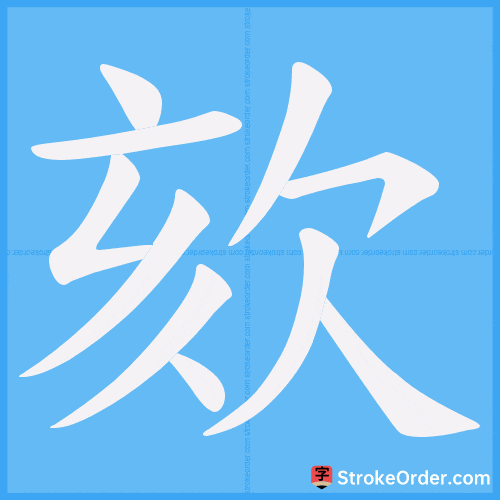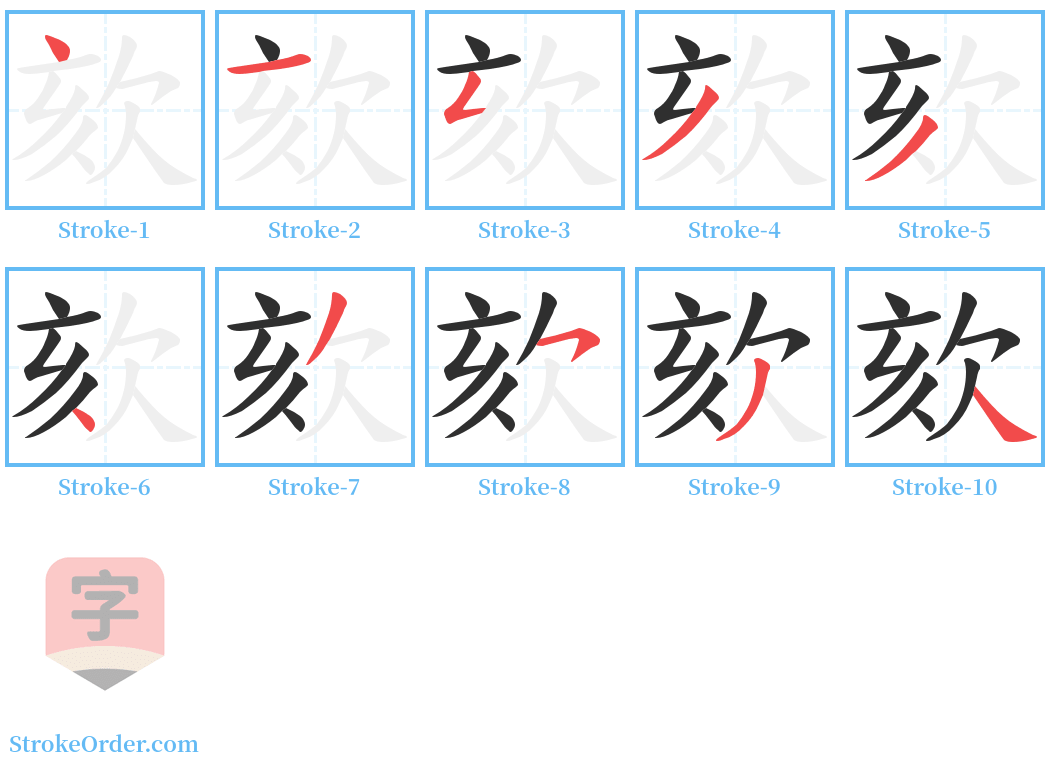欬 Stroke Order
Animated Stroke Order of 欬

Stroke Order Diagrams for 欬

Information of 欬
Pinyin
kài、 ài
Radical
欠
Strokes
10 strokes
Usage
★★
Definition
欬 [kài]
1. Also written as 咳. Cough, meaning to cough.
Example: In "Zuo Zhuan, Year 24 of Duke Zhao," it says: "I turned left and coughed, and then killed him."
2. In Traditional Chinese Medicine, it is defined as a serious cough ([En.] cough).
Reference: "Shuo Wen": 欬 refers to a reversed qi.
Reference: "Zhou Li": In winter, there are coughs with a wheezing illness.
Reference: "Su Wen, Yin Yang Ying Xiang Da Lun": When it changes, it becomes cough. Note: "Cough is beneficial for the throat."
Reference: "Li Ji, Qu Li": One should not cough loudly in the car.
Reference: "Shi Ji, Di Zi Zhuan": Lu Yue is known as 'cough,' styled Zi Sheng.
Reference: "Li Ji, Yue Ling": The country has many wind coughs.
Reference: "Zuo Zhuan, Year 24 of Duke Zhao": I turned left and stopped coughing; then I killed him.
3. The gas from the stomach comes out of the mouth and makes a sound.
4. Ancient same as 咳.
5. (Variant of pronunciation in some contexts).